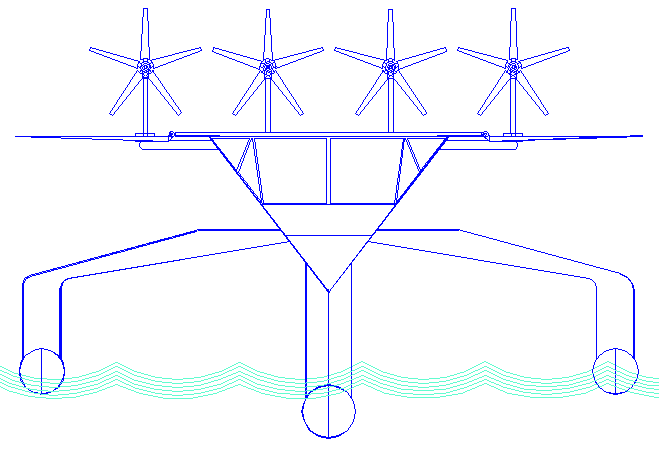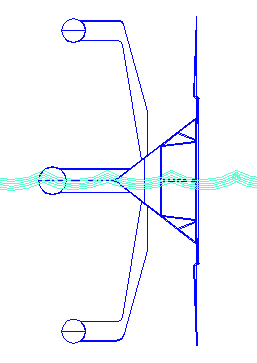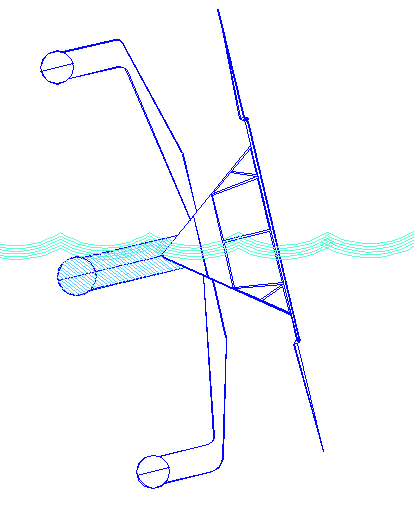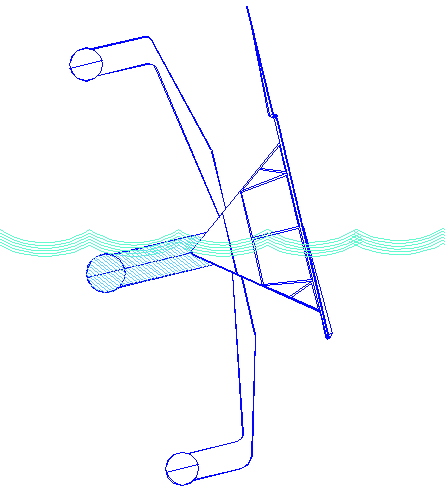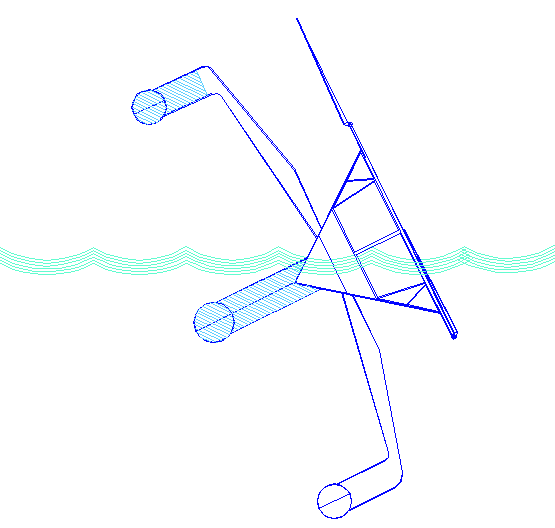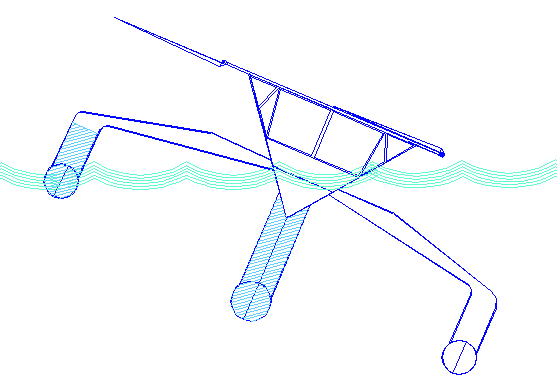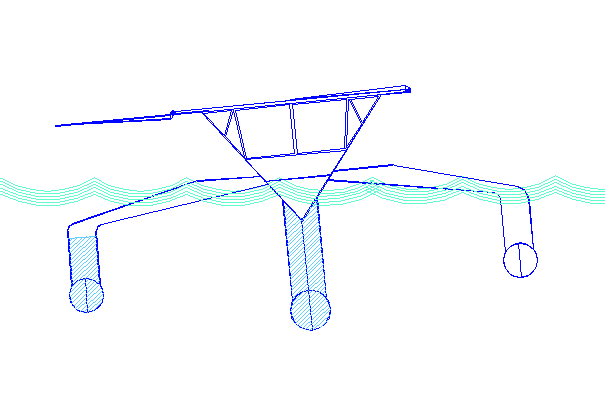|
ACTIVE SINGLE SUBMERGED STABILISED HULL
|
|||||||||||||||||||||||||||||||
|
A solid foundation is the basis of all good projects. The basics must be spot on and in a boat, the most basic component of all is the hull. Yet, conventional boat hulls cannot adjust themselves for optimum running in changing conditions and real time. They have buoyancy reserves and solid shape features, but they cannot change their shape, trim or displacement (except for submarines) to adapt to changing weather conditions - or to cope with freak wave capsize.
The all new Solar Navigator is possibly the first boat to incorporate active hulls in the manner shown below (and on the Stealth page). A SWATH vessel is all very well, but it is expensive to build due to complex computer controlled stabilization. The wetted area of a SWATH is high compared to a cat or trimaran, so that the advantage of platform stability, has to be balanced against extra fuel costs to cope with the increase in frictional drag.
We are testing a new hull configuration that prevents pitching in waves and keeps the wetted area low for hull efficiency? SWATH hulls are also prone to roll unless the hull track is wide, due to the limited water-plane area, hence low reserve buoyancy. That is not ideal for a solar powered ship with a tennis court of panels high above the sea surface, so increasing the center of roll/buoyancy. When the objective is to keep the solar collectors aimed at the sun - and that of course requires a stable platform.
This presents a nightmare situation for marine architects in the problem solving department.
That is what we are about. Solving the equation. Making it work.
The solution is a SWASSH (Small Waterplane Area Submerged Single Hull) hull with a good distance between fore and aft foils, so that the reserve buoyancy that is need to prevent pitch, is reduced. Using this configuration, the foils may be narrower to reduce drag. The (frontal) area presented to the sea, determines total drag, as much as the shape of the hull.
Instead of fins to keep the boat running true (horizontal) the SolarNavigator moves a weight to and fro in the main hull. In this case the weight is a portion of the ships batteries. Other autonomous vessels use a similar system to change attitude, such as the Seaglider.
To see more on the advantages and disadvantages of SWATH design, see our pages on SWATH commercial ships and our own SWATH test models, one of which we sadly destroyed before realizing the research value - as an example of how not to build a SWATH vessel. The waterplane area was just too small - not enough reserves, putting incredible strain on the pumped water trimming system.
AUTONOMOUS SELF RIGHTING ABILITY
A robot ship has to rely on itself to cope with all sea conditions. In the unlikely event that a freak wave were to capsize the SolarNavigator, the combination of moveable outriggers and floodable hull sections will allow the onboard robot systems to turn the boat back upright - using the following sequence. Please note that when capsized deliberately, i.e. totally inverted, a test model hull came to rest naturally on its side, as in figure 1. below. So, that is our starting point for the recovery sequence.
1. Flood main hull tanks 2. Lower raised leg 3. Fold submerged wing
SELF RIGHTING SEQUENCE:
4. Pump raised leg with seawater 5. Allow vessel to rotate itself back to the horizontal 6. Pump seawater from flooded hull sections
7. to regain NORMAL RUNNING TRIM
With funding from our development partners, we should like to test the system at 1/20th scale using radio control, to be sure that the full size boat will behave as per the above illustrations.
The main reason for having an active hull is not stealth capability, nor self righting. It is in fact to be able to trim the hull in real time, according to changing sea conditions. Then we thought, well, if we have this kind of flexibility, we may as well use it to our advantage.
You can follow the progress of this exciting project, how we overcame the hull design issues for the SolarNavigator Mk6 with a 1/20 scale tank test model, and without a bottle of Copydex is sight. Yes, we watched Blue Peter and never got a badge. :)
|
|||||||||||||||||||||||||||||||
|
This website is copyright © 2013 Electrick Publications. All rights reserved. The bird logo and names Solar Navigator and Blueplanet Ecostar are trademarks ™. The Blueplanet vehicle configuration is registered ®. All other trademarks hereby acknowledged and please note that this project should not be confused with the Australian: 'World Solar Challenge'™which is a superb road vehicle endurance race from Darwin to Adelaide. Max Energy Limited is an educational charity working hard to promote world peace.
|

